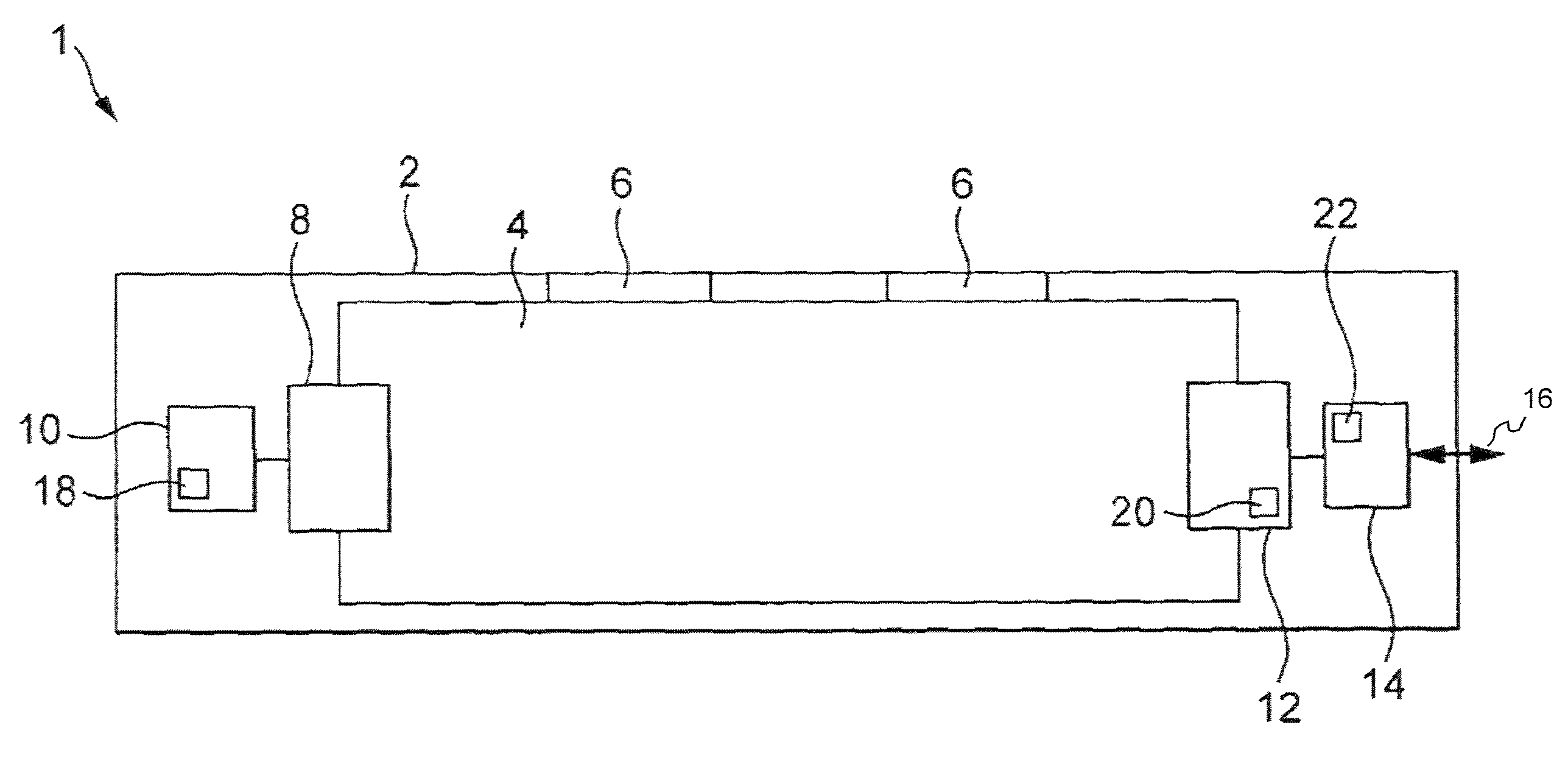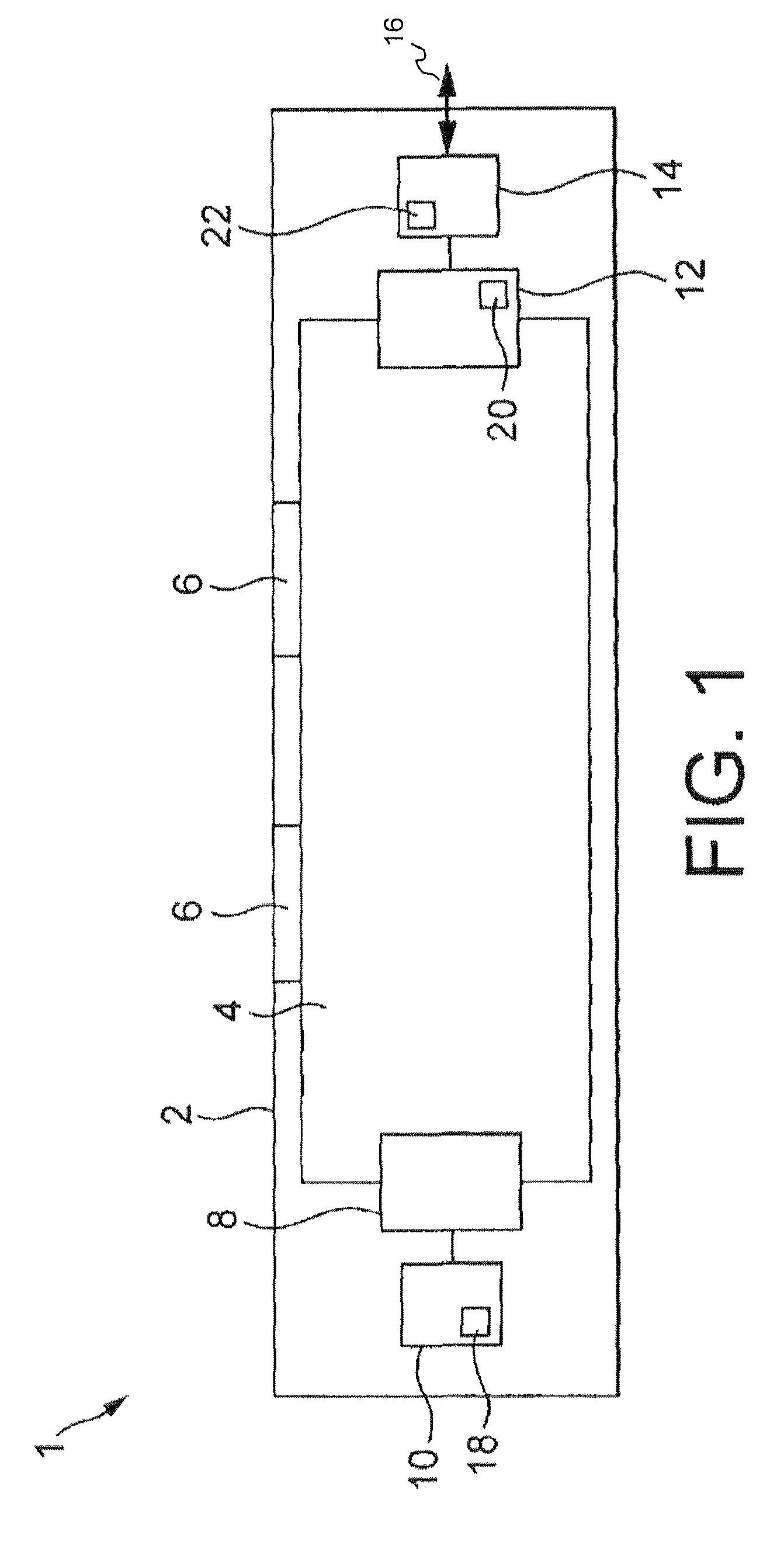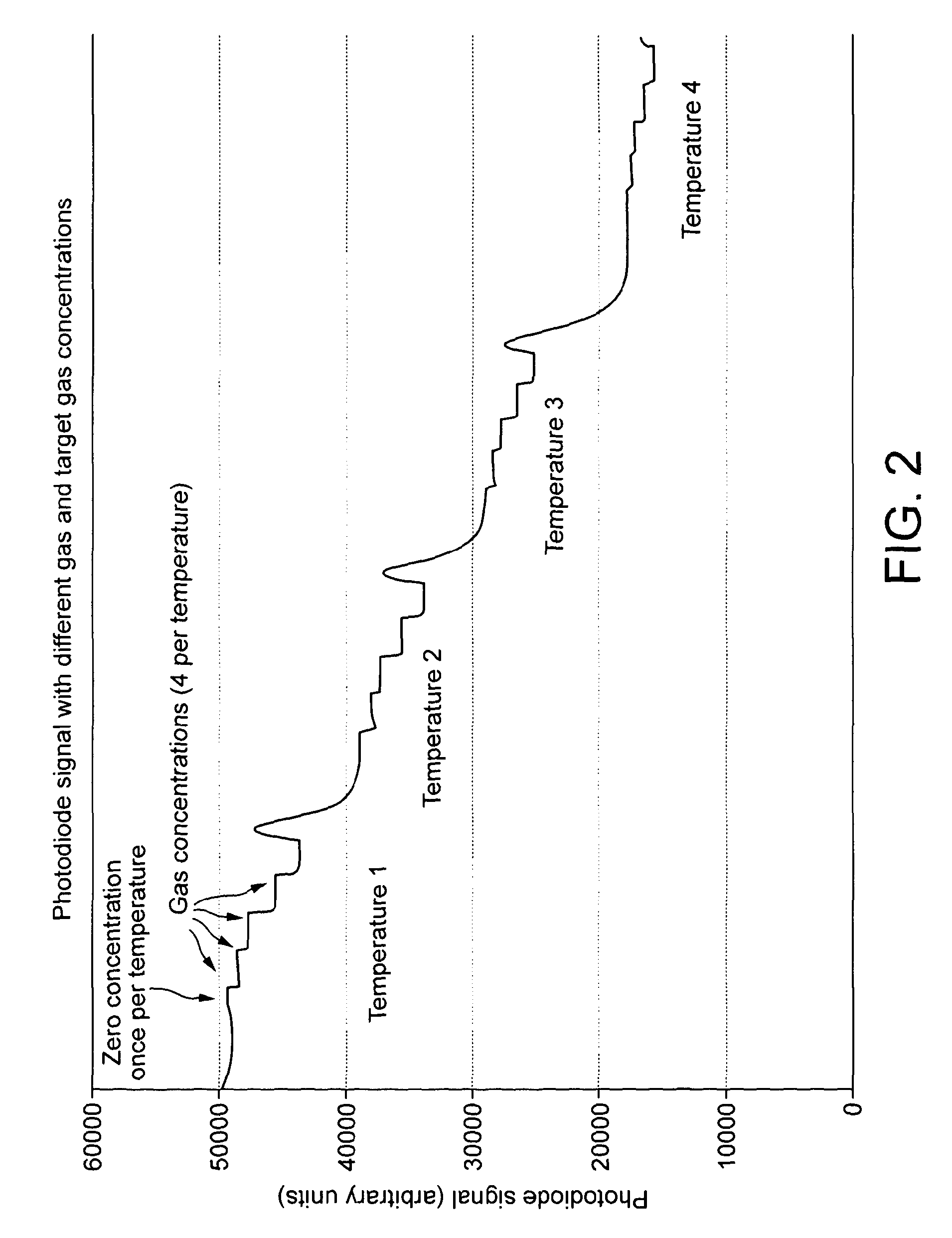Temperature calibration methods and apparatus for optical absorption gas sensors, and optical absorption gas sensors thereby calibrated
a technology of temperature calibration and gas sensor, applied in the field of optical absorption gas sensors, can solve the problems of inability to determine, difficult to independently measure the change in optical properties of led and photodiodes with temperature, and design constraints of optical gas sensors
- Summary
- Abstract
- Description
- Claims
- Application Information
AI Technical Summary
Benefits of technology
Problems solved by technology
Method used
Image
Examples
Embodiment Construction
[0049]With reference to FIG. 1, an optical absorption gas sensor 1 has a body 2 defining a gas sample chamber 4, into which a gas sample can pass by diffusion through one or more apertures 6. A light emitting diode 8 functions as a light source, and is driven by an LED driving circuit 10. A photodiode 12 functions as a photosensor, and has an output current dependent on the light which falls on the photodiode junction. The current from the photodiode is amplified and processed by a control and compensation circuit 14 including a microcontroller, which provides a compensated signal through an output 16 which is related to the concentration of analyte gas in the gas sample chamber.
[0050]The gas sample chamber may have any of a large number of configurations known to those skilled in the art, and typically includes a reflective inner surface, so that light from the LED may be reflected one or more times between the LED and a photodiode. An example configuration is illustrated in FIG. 5...
PUM
| Property | Measurement | Unit |
|---|---|---|
| temperature | aaaaa | aaaaa |
| temperature | aaaaa | aaaaa |
| concentration | aaaaa | aaaaa |
Abstract
Description
Claims
Application Information
 Login to View More
Login to View More - R&D
- Intellectual Property
- Life Sciences
- Materials
- Tech Scout
- Unparalleled Data Quality
- Higher Quality Content
- 60% Fewer Hallucinations
Browse by: Latest US Patents, China's latest patents, Technical Efficacy Thesaurus, Application Domain, Technology Topic, Popular Technical Reports.
© 2025 PatSnap. All rights reserved.Legal|Privacy policy|Modern Slavery Act Transparency Statement|Sitemap|About US| Contact US: help@patsnap.com



